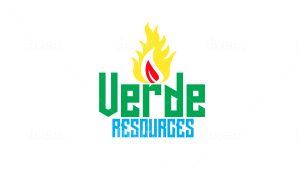
The global energy industry and government energy policies are consistently generating news headlines. Top energy trends like the push towards net zero, the transition to electric vehicles, the escalating price of fossil fuels, and even the basic systems that we use to heat our homes are the subject of ongoing – and often contentious – public debate.
Strategic energy issues have long been in the public eye. A reliable supply of affordable energy is essential for daily life and economic growth, and energy sources have constantly evolved in step with technological advances. Nuclear power, the coal industries, and the oil crisis of the 1970s were all important political issues in their day. Public reactions to current trends in renewable energy are following a well-established pattern, and are based on similar, practical concerns.
The first fundamental difference between the 2020s and previous decades is that trends in renewable energy technology have created new possibilities that previous generations only guessed at. The second key difference is that climate change is acknowledged as a reality (although its causes and implications remain disputed). There is now a major momentum towards abandoning fossil fuels and developing sustainable green energy.
The 3 D’s of Modern Energy Evolution
Emerging trends in renewable energy can be concisely summarized as the 3 D’s: Digitalization, Decarbonization, and Decentralization. This blog post will explore the three pillars of future trends in renewable energy and how they are influencing investments in renewable energy.
Yossi Ron, ICL Group’s VP of Energy and Strategy Projects offers some valuable insights into the 3D’s of the sustainable energy revolution and how ICL is acting to integrate the three core principles into its own global operations and new projects. He also shares his thoughts on how trends in renewable energy technology are likely to create financial opportunities for companies like ICL.
Decarbonization
From the days of our ancestors burning wood to our modern reliance on fossil fuels, the evolution of energy consumption has been a testament to human adaptability. Carbon emissions surged exponentially during the industrial revolution, but are almost 150 times higher today than they were in 1850.
This alarming increase underscores the urgent need for change. As governments pivot towards sustainable policies, investments in renewable energy are accelerating, with trends pointing to a future of sustainability supporting innovation.
It’s companies like ICL that are playing a pivotal role in enabling the transition to clean energy, with innovative research and development and the development of clean energy storage products. Our commitment to decarbonization, fueled by such advancements, promises a cleaner, brighter, and more sustainable future for generations to come.
Decentralization
One of the most exciting global trends in energy supply infrastructure is the move towards decentralization. The traditional centralized energy model, with its dependence on fossil fuels, though once efficient, inadvertently led to monopolistic structure. Initial investments in renewable energy were fairly tentative, but the exigencies of climate change and public demand for green energy have supercharged both research and investment.
Another unfortunate consequence of (fossil fuel-dependent) centralized energy supplies is the potential for major variations in energy prices. The contemporary shift towards decentralized energy infrastructure signals a hopeful change, promising genuine energy independence and a shield against the volatility of fossil fuel pricing.
Future trends in renewable energy all point towards energy decentralization based on hybrid microgrids that draw on solar, thermal, hydro, wind, and even clean hydrogen energy. Embracing a mix of renewable energy sources and leveraging state-of-the-art technologies, including high-capacity storage solutions such as smart batteries, we’re on the brink of an energy renaissance. This paradigm shift empowers individuals, businesses, and municipalities, heralding a new era of decentralized yet globally impactful energy infrastructures.
Digitization
In an age where we can control our home’s temperature with a voice command, digitization is reshaping our energy experience. The post-World War Two era marked the dawn of computer technology’s significant role in energy and infrastructure management. Today, with leaps in AI, robotics, and other digital tools, we stand at the cusp of an energy transformation.
Digitization offers a spectrum of possibilities, from real-time data management and performance optimization to better utilization of assets and infrastructure and better return on investments. As we seamlessly integrate technologies like 5G and 6G into our daily lives and operations, AI-driven solutions are poised to optimize energy consumption.
The digital wave, when used wisely, has the potential to create secure energy systems that deliver an abundance of universally accessible, sustainable, and clean energy. The potential for economic growth and improvements to the quality of life for humanity is game-changing.
Zooming Into 2024: Energy Trends in Focus
As we set our sights on 2024 and beyond, several energy trends are emerging as game-changers.
Current trends in renewable energy are evolving so rapidly that it’s realistic to think in terms of months and years, as well as decades when we attempt to anticipate new developments and innovations. Looking ahead to 2024, there are definitely some overall global trends in energy development that are worth following closely.
1. The Shift to Renewable Energy Continues
The strategic global shift to renewable energy is continuing, despite disagreements about the pace of change and how to implement new technologies. The volume and scope of R&D in renewable energy technology and government stimulants are creating exciting investment opportunities.
It’s difficult to make accurate projections about the size of the renewable energy market, but the electric vehicle market alone is expected to reach US$1,381 Billion by 2032. When we factor in the manufacture, installation, and maintenance of solar energy plants, wind and tidal power generation plants, hydrogen plants, and upgraded decentralized energy grids, we’re possibly looking at one of the biggest financial opportunities in human history.
2. Electrification of Fossil-Fired Units
It’s becoming widely accepted that fossil fuel-fired units are no longer the future. The volatility in fuel prices following the conflict in Ukraine shattered a generation of complacency in many economies. Companies that can provide solutions or components for the affordable electrification of fossil fuel-fired units are in a growth industry.
The Environmental Protection Agency (EPA) recently proposed a new Clean Air Act that will aim to further reduce greenhouse gas emissions from fossil fuel-fired electric generating units. The proposed legislation is part of a wider trend towards the electrification of industrial boilers, turbines, and household heating units. As with the transition to electric vehicles, cost and convenience are major factors in winning public support. Companies that present viable solutions and products will be at the forefront of a growth market.
3. Waste to Energy
Circular economies are increasingly viewed as financially beneficial, as well as an ethical imperative. Any practical solution that allows the reuse, recycling, or safe conversion of waste to clean energy is likely to find a receptive market. There is great potential for scalability from household level up to industrial plants or regional waste management sites.
An excellent example is the ICL Amsterdam Phosphate Recycling Unit. The plant takes phosphates from sewage sludge ashes and bone meal, recycling it into viable ingredients for high-quality phosphate fertilizers. Other waste-to-energy technologies that are attracting investors include pyrolysis for converting waste plastics into fuel and plasma arc gasification that can produce hydrogen and carbon monoxide for fuel cells.
4. Energy Storage
The planned transition to electric vehicles has highlighted the need for localized energy storage solutions. Individual workplaces, residential associations, or even entire neighborhoods are likely to start taking responsibility for energy storage and distribution via hybrid microgrids or energy hubs. These will be enabled and managed by smart technology.
The smart battery market is expected to double by the end of the decade, with a predicted value of US$ 64.34 Billion. There’s now unprecedented research into battery technologies and the applications of smart batteries are likely to grow as the technology develops. One exciting scenario is that homes will generate their own electricity via PV panels during the day and store it for nighttime use. Blockchain technology will enable the sharing or transfer of stored energy via local microgrids.
5. Heat Pumps for Residual Heat
Heat is both an energy and an asset that is often generated as a byproduct of other processes. The majority of residual heat is either lost or underutilized. Heat pumps and any other technical innovations that can capture, channel, or store residual heat are expected to become standard requirements in future design and planning.
The UK government is actively promoting a £450 million Boiler Upgrade Scheme. It is keen to persuade householders to upgrade their fossil fuel boilers to heat pumps that (increasingly) run on clean electricity. Existing heat pump technology is better suited for milder temperate climates. As heat pumps become more popular, we’re likely to see research into technologies that make heat pumps viable in colder climates. A combination of domestic PV panels, smart batteries, and heat pumps may replace air conditioning units that currently place enormous strain on national grids during heatwaves.
ICL: Setting Trends in Renewable Energy
ICL Group. is a global leader in the field of specialty minerals. With decades of focus on sustainability, ICL is no stranger to groundbreaking initiatives. From the Green Sdom project to developing hybrid microgrids and exploring hydrogen energy, their commitment to a cleaner future is evident.
ICL is one of the world’s major suppliers of bromine and phosphate derivatives. The company is currently building a brand new $400 million dollar plant in the US to supply materials for LFP battery manufacturers. Smart batteries are essential for the transition to electric vehicles and for the development of hybrid microgrids. ICL is at the forefront of research and development into clean energy products.
Yossi Ron is optimistic about ICL’s own role in developing sustainable energy.
“Energy efficiency and energy conservation are going to be key to everything we do in ICL. Green Sdom is a flagship project but it’s just part of the picture. We run an initiative called the ACE program. The ACE program is an energy efficiency and decarbonization program. We’re working to take carbon out of our energy equation – that means building our own microgrids where feasible and using AI for smart energy production and conservation.
We’re studying how to install our private microgrids – grids that will power entire industrial sites and ultimately sell surplus energy to the national grid. It’s really exciting and we’re creating a template that other businesses can follow in the future.”
Embracing Future Trends in Renewable Energy
ICL is leading the private sector in the development of renewable energy by transforming its own operations. Very few companies are attempting creation of an independent microgrid and implementing circular economies that are not only effective but profitable.
Through its new plant in the US, ICL is poised to become a major force in the supply of LFP battery materials. The company will be a direct contributor to the development of viable electric vehicles and a decentralized energy grid. ICL is continuing to allocate substantial resources to R&D across the spectrum of sustainable energy and is enthusiastically embracing a future defined by genuine energy independence and security.



You must be logged in to post a comment.